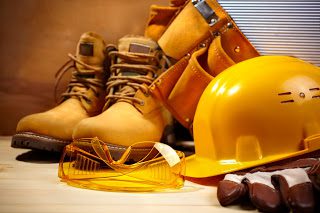
5 Tips for a Safe & Productive Workplace
A safe workplace environment can help prevent unnecessary injuries and in turn, improve productivity in the workplace. These practices can work for your average office setting or any industrial workplace.
1. Slipping, tripping and falling
Properly using safety guards and drip pans
Help peoples’ visibility around corners with blind spots, install mirrors
Ensure all exits are clear of blockage
Report all leaks and spills to higher management immediately
In areas that cannot always be cleaned, consider installing anti slip flooring and replace any damaged flooring
Clear away clutter
2. Control Dust – when the dust reaches about 1/32 of an inch (about the same thickness of a dime or a paper clip) it is time to clean your workplace! If the dust level is higher, you may want to consider getting an industrial hygienist to test for any air quality exposures or dust concerns. Investing in an industrial vacuum may be necessary depending on your size of workplace. Also good to note is that dust can affect the quality of your electronic equipment.
3. Eliminate Hazards
When combustible materials are no longer needed in a work area, ensure that are packed away safely in the proper assigned storage area
Any flammable materials should be stored away from ignition sources
If your clothing gets even a small amount of flammable liquids on it, change your clothes!
4. Avoid Tracking Materials– Tracking material is any potential hazard that can move from one area to another. For example, if you have work area mats that are not clean or maintained a worker walking over the mat could carry hazardous materials to other areas of the workplace.
5. Prevent Falling Objects
Stacking boxes and material in a straight formation to prevent them from falling
Toe boards, toe rails or nets are helpful in preventing objects from falling and injuring workers
Heavy objects should always be on lower shelves
Avoid stacking any objects in walk ways or exits
Recent Blogs
- Preventing Eye Injuries
- Aerial Lift Safety
- Why Onsite Safety Training Is Popular
- Ladder Safety Training
- Aerial Lift Facts
- Forklift Safety Training
- WHMIS 2015 Training
- 5 Steps for Ensuring Safety in the Workplace
- What is a Respirator Mask Fit Test?
- What Can I Expect From a Respirator Mask Fit Test?
- Respirator Mask Fit Testing FAQ’s
- Propane Safety Awareness Tips
- Industrial Lift Equipment Training
- Electric or Propane Counterbalance
- WHMIS 2015 (Workplace Hazardous Materials Information System)

